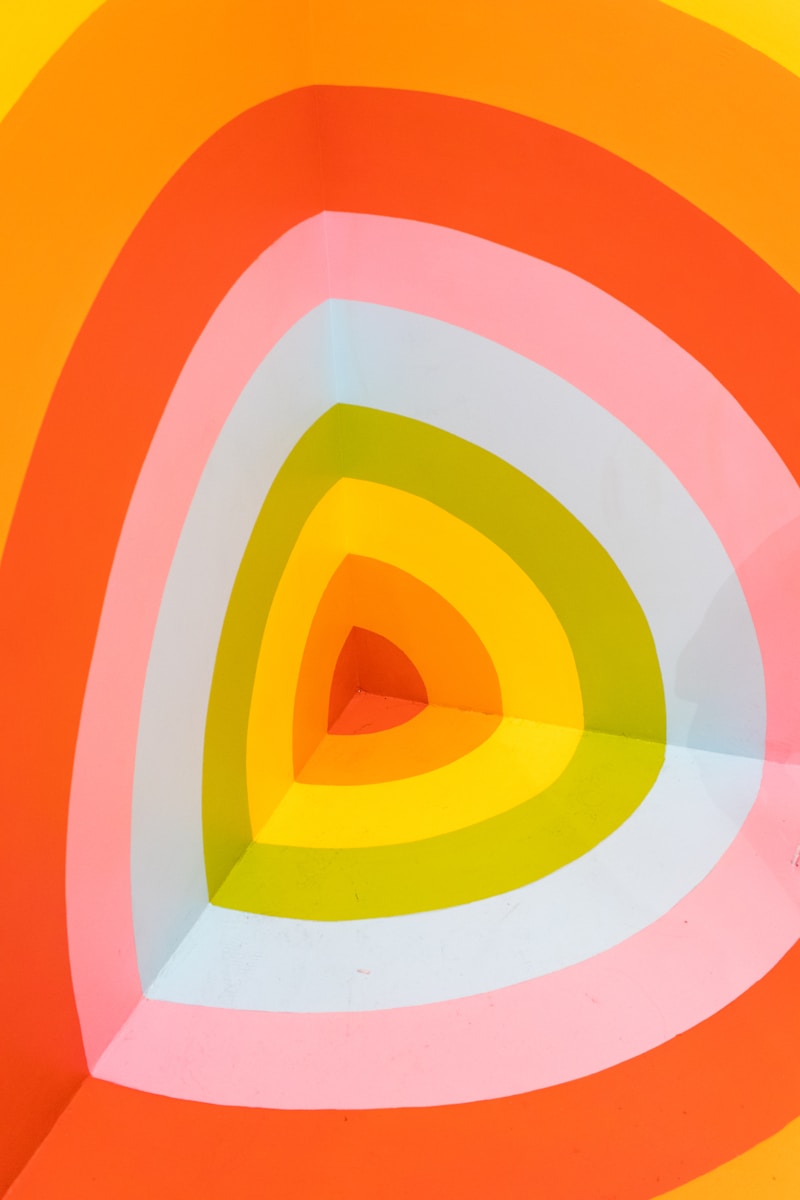Exploring the World of Geometric Color Patterns: A Vibrant Journey into Design
Introduction to Geometric Color Patterns
In the realm of design, few elements are as captivating as geometric color patterns. These intricate designs, characterized by their repetitive shapes and vibrant hues, have been utilized across various platforms—from fashion to interior design, and even digital art. This article will delve into the definition, applications, and the significance of geometric color patterns, while also exploring popular techniques for creating them.
What Are Geometric Color Patterns?
At their core, geometric color patterns are visual arrangements formed by shapes such as squares, circles, triangles, and polygons, often combined with striking colors. The use of geometry in art and design can be traced back to ancient civilizations, where forms were used to convey complex meanings and cultural symbols. Today, these patterns are celebrated for their aesthetic appeal and ability to evoke emotion.
The Importance of Color in Geometric Patterns
Color plays a pivotal role in defining the impact of geometric patterns. Different colors can elicit various psychological responses; for instance, warm colors like red and orange can create feelings of excitement and warmth, while cooler colors like blue and green tend to evoke calmness and tranquility. When combined with geometric shapes, the interaction between color and form can lead to mesmerizing designs that captivate viewers.
Applications of Geometric Color Patterns
Geometric color patterns are versatile and find their application in numerous fields:
| Field | Example of Use |
| Fashion | Patterns on clothing and accessories, such as scarves and handbags. |
| Interior Design | Wallpapers, tiles, and fabric upholstery featuring geometric designs. |
| Graphic Design | Logos, marketing materials, and digital art incorporating geometric elements. |
| Architecture | Structural designs utilizing geometric shapes to enhance aesthetic appeal. |
Creating Your Own Geometric Color Patterns
For those interested in design, creating geometric color patterns can be both a rewarding and enjoyable endeavor. Here are some steps to guide you through the process:
1. Choose Your Color Palette
Start with a limited color palette. A cohesive color scheme is vital for maintaining harmony in your design. Consider using tools like Adobe Color or Coolors to help you select complementary and contrasting colors.
2. Select Your Shapes
Decide on the geometric shapes you want to incorporate. Common choices include circles, triangles, squares, and hexagons. Experiment with different sizes and orientations to add depth to your design.
3. Arrange Your Patterns
Begin arranging your shapes in a way that feels dynamic and visually appealing. Pay attention to how the colors interact with one another and ensure a balanced distribution across the layout. Tools like Adobe Illustrator or Canva can facilitate this process.
4. Refine and Finalize Your Design
Once you have a basic layout, take a step back and analyze your design. Look for areas where improvements can be made, such as enhancing color contrast or adjusting the size of certain shapes. Don't hesitate to make iterative changes until you achieve a design that resonates with you.
Incorporating Geometric Color Patterns in Various Mediums
Geometric color patterns can be utilized in a multitude of mediums, each offering its unique challenges and opportunities:
- Textiles: Fabrics featuring geometric designs can enhance clothing lines and home décor but require attention to how colors appear under different lighting and settings.
- Digital Art: Digital platforms offer a wide array of tools for experimentation with geometric color patterns, allowing artists to explore limitless combinations without the constraints of physical mediums.
- Print Media: Brochures, posters, and other print materials benefit from the eye-catching nature of geometric designs, making them ideal for promotional campaigns.

Exploring Famous Uses of Geometric Color Patterns
Across history, numerous artists and designers have made significant contributions to the world of geometric color patterns. A few notable figures include:
- Piet Mondrian: Known for his minimalist geometric compositions characterized by primary colors and rectangular forms.
- Bridget Riley: An influential artist in the Op Art movement, Riley's work features dynamic geometric patterns that create the illusion of movement.
- Theo van Doesburg: A pioneer of the De Stijl movement, his use of color and geometry significantly influenced modern abstract art.
Understanding Keywords Associated with Geometric Color Patterns
As you explore geometric color patterns, it may be beneficial to understand related keywords and phrases that can help you in your research or design journey. Some of these include:
- Geometric shape designs
- Color theory in design
- Geometric patterns in art
- Modern geometric wallpaper
- Digital geometric art
Conclusion: Embracing the Beauty of Geometric Color Patterns
In conclusion, geometric color patterns serve as a bridge connecting historical artistry with contemporary design. Their application spans numerous fields, each benefiting from the striking visual appeal that these patterns provide. As you embark on your journey in exploring or creating geometric color patterns, remember the importance of color theory, the interplay of shapes, and the significance of balance in design.
Whether you're an established artist or a budding designer, incorporating geometric color patterns in your work can elevate your aesthetic and engage viewers on a deeper level. Always stay curious, experiment freely, and let the vibrancy of geometric designs inspire your creations.
Suggested Practices: When working with geometric color patterns, consider keeping a sketchbook to document ideas, play with new color combinations, and refine your techniques. Engaging with communities or workshops focused on design can also provide valuable feedback and inspiration.